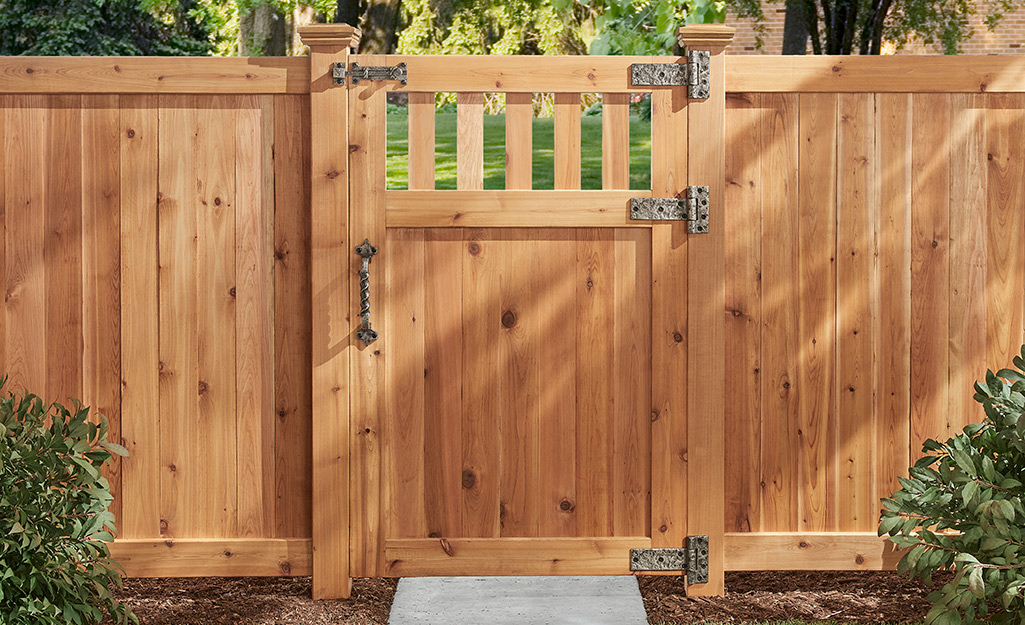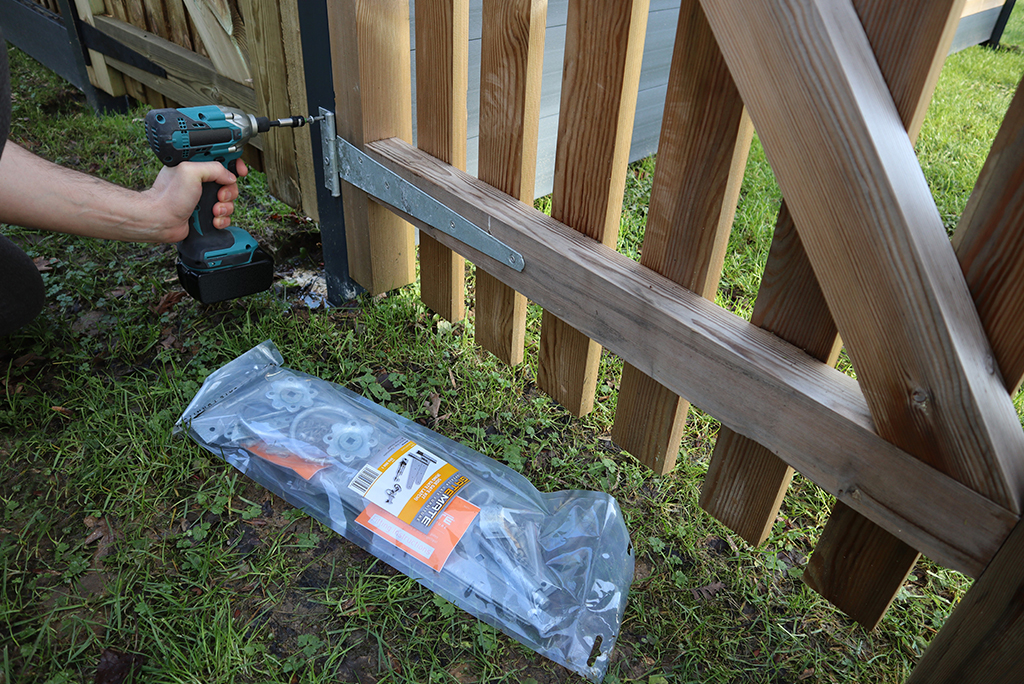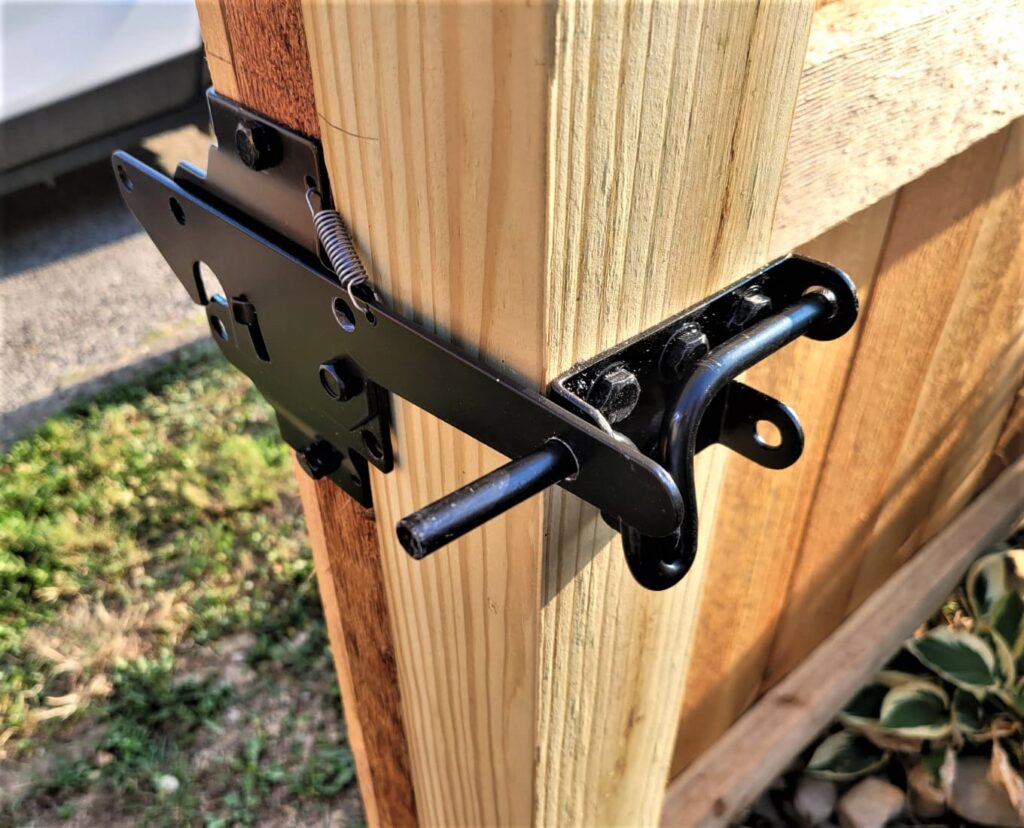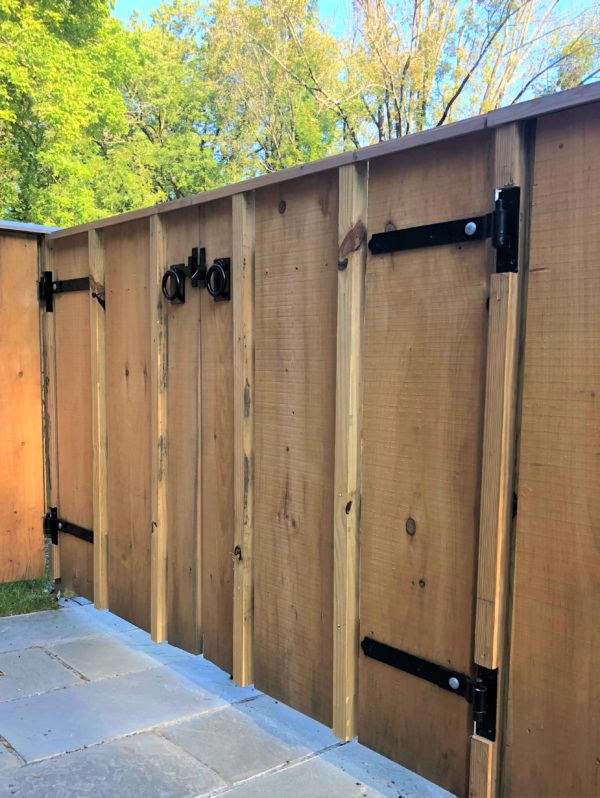Are you looking to spruce up your outdoor space with a new fence? One important aspect to consider is the fence gate hardware. Have you ever wondered what makes a good fence gate hardware and how to choose the right one? Well, in this article, we will delve into the world of fence gate hardware and provide you with some tips to help you make the right choice.
When it comes to fence gate hardware, there are a few key factors to consider. Firstly, you’ll want to think about the material of the hardware. Whether it’s metal, wood, or plastic, each material has its own qualities and benefits. Secondly, you’ll need to determine the size and weight capacity of the hardware to ensure it can handle the weight of your gate. Additionally, factors like security features, ease of installation, and aesthetic appeal should also be taken into account. In our upcoming article, we will discuss each of these aspects in detail and provide you with a comprehensive guide on how to choose the right fence gate hardware for your needs. So stay tuned to learn more about this important aspect of fencing!
Tips for Choosing the Right Fence Gate Hardware
When it comes to choosing fence gate hardware, there are several factors that should be taken into consideration. The hardware you select can have a significant impact on the functionality, security, and overall appearance of your fence gate. In this article, we will explore the different types of fence gate hardware and provide tips for selecting the right options to meet your specific needs.

Different Types of Fence Gate Hardware
Overview of Fence Gate Hardware
Fence gate hardware encompasses a range of components that are essential for the proper functioning of a gate. These include hinges, latches, locks, handles, gate stops, and closers. Each of these types of hardware plays a crucial role in ensuring the functionality, security, and convenience of your fence gate.
Hinges for Fence Gates
Hinges are responsible for connecting the gate to the fence post or gate frame and allow the gate to swing open and closed. There are different types of hinges available, each with its own advantages and considerations. Some common types of gate hinges include strap hinges, butt hinges, and self-closing hinges.
Latches for Fence Gates
Gate latches are used to secure the gate in a closed position. They come in various styles and designs, including gravity latches, slide bolt latches, and magnetic latches. The choice of latch type depends on factors such as the level of security desired, ease of use, and compatibility with the gate material.
Locks for Fence Gates
Adding a lock to your fence gate can provide an extra layer of security. Gate locks come in different styles, such as padlocks, combination locks, and keyless locks. It is important to consider the level of security needed, ease of access, and compatibility with the gate latch when selecting a lock for your fence gate.
Handles for Fence Gates
Gate handles are essential for easily opening and closing the gate. They come in a variety of designs, including pull handles, lever handles, and ring handles. When choosing a gate handle, consider factors such as ergonomics, grip comfort, and overall gate design.
Gate Stops and Closers for Fence Gates
Gate stops prevent the gate from swinging too far or hitting the fence post, thus protecting both the gate and the fence. Gate closers provide automated closing of the gate to ensure it remains properly secured at all times. Choosing the right gate stops and closers involves considering factors such as adjustability, durability, and compatibility with the gate size and weight.
Factors to Consider When Choosing Fence Gate Hardware
Durability and Strength
Fence gate hardware is subject to constant use and exposure to the elements. Therefore, it is crucial to select hardware that is durable and can withstand different weather conditions. Look for materials such as stainless steel or galvanized steel that offer resistance to rust and corrosion. Additionally, consider the weight capacity of the hardware to ensure it can support the gate properly.
Material and Finish Options
Fence gate hardware is available in various materials, including steel, iron, aluminum, and bronze. Each material has its own advantages in terms of strength, aesthetics, and cost. Consider the material that best complements your fence style and the overall appearance you want to achieve. Additionally, choose a finish that enhances the durability and visual appeal of the hardware.
Security and Safety
The level of security and safety desired for your fence gate will influence the type of hardware you choose. For example, if security is a top priority, you may opt for a robust latch system and a high-quality lock. Additionally, consider safety features such as self-closing hinges or childproof latches if you have young children or pets.
Compatibility with Fence Type
Different types of fences require specific gate hardware. Whether you have a wooden fence, vinyl fence, chain-link fence, or wrought iron fence, ensure that the hardware you select is compatible with the fence type. Consider factors such as the weight and dimensions of the gate, as well as any unique installation requirements that may be specific to your fence type.
Ease of Installation
Unless you have prior experience with fence gate hardware installation, it is important to choose hardware that is relatively easy to install. Look for hardware that comes with clear installation instructions or consider hiring a professional if you are unsure about the installation process. Additionally, consider the availability of any special tools or hardware required for installation.

Choosing the Right Hinges for Your Fence Gate
Overview of Gate Hinges
Gate hinges are an essential component of fence gate hardware and are responsible for allowing the gate to swing open and closed. They provide stability and support to the gate while ensuring smooth operation.
Types of Gate Hinges
There are several types of gate hinges to choose from, including strap hinges, butt hinges, and self-closing hinges. Strap hinges are a popular choice for heavy gates as they provide exceptional support and durability. Butt hinges are more discreet and suitable for gates with a lighter weight. Self-closing hinges are ideal for gates that require automatic closing.
Selecting the Right Size and Weight Capacity
When choosing gate hinges, it is important to consider the size and weight capacity of your gate. The hinges should be able to support the weight of the gate without sagging or causing any strain on the gate frame. Consult the manufacturer’s guidelines or seek professional advice to determine the appropriate hinge size and weight capacity for your specific gate.
Considerations for Self-Closing Hinges
Self-closing hinges are a convenient option for fence gates, as they ensure the gate closes automatically after each use. When selecting self-closing hinges, consider factors such as the closing speed, adjustability, and resistance to weather conditions. It is also important to choose hinges that are compatible with your gate latch and desired security level.
Selecting Suitable Latches for Your Fence Gate
Overview of Gate Latches
Gate latches are essential for securing your fence gate in a closed position. They come in various styles and designs, each offering different levels of security and ease of use.
Types of Gate Latches
Some common types of gate latches include gravity latches, slide bolt latches, and magnetic latches. Gravity latches rely on the force of gravity to keep the gate closed, while slide bolt latches use a bolt mechanism to secure the gate. Magnetic latches offer a secure closure with the help of magnets.
Choosing Between Padlockable and Non-Padlockable Latches
Depending on the level of security needed, you may choose between padlockable and non-padlockable latches. Padlockable latches allow you to add a padlock for additional security, while non-padlockable latches are suitable for gates that require quick and easy access without compromising security.
Considerations for Self-Latching Latches
Self-latching latches offer the convenience of automatic latching, ensuring the gate remains securely closed. When selecting self-latching latches, consider factors such as ease of use, adjustability, and compatibility with the gate material and size. Additionally, ensure that the latch mechanism is resistant to tampering or accidental release.

Ensuring Security with Fence Gate Locks
Importance of Gate Locks
Gate locks play a crucial role in ensuring the security and privacy of your property. They provide an additional layer of protection by preventing unauthorized access and deterring potential intruders.
Types of Gate Locks
Gate locks come in various types, including padlocks, combination locks, and keyless locks. Padlocks are a popular choice due to their versatility and ease of use. Combination locks offer the convenience of a preset code for access. Keyless locks, such as electronic or smart locks, provide advanced security features and remote access control.
Keyed and Keyless Locking Mechanisms
When choosing a gate lock, consider whether you prefer a keyed or keyless locking mechanism. Keyed locks require a key for access, while keyless locks use alternative methods such as codes, fingerprint recognition, or smartphone apps. Keyed locks provide traditional security and ease of access, while keyless locks offer convenience and advanced security features.
Enhancing Security with Deadbolts
For added security, consider including a deadbolt in your gate lock system. Deadbolts are cylinder locks that provide high resistance to tampering or forced entry. They are often used in conjunction with standard gate locks to reinforce security.
Comfortable Handle Options for Your Fence Gate
Overview of Gate Handles
Gate handles are an important component of fence gate hardware, as they provide a comfortable and ergonomic grip for opening and closing the gate. They come in various designs and styles to suit different gate types and personal preferences.
Different Handle Designs
Gate handles are available in different designs, including pull handles, lever handles, and ring handles. Pull handles provide a simple grip for easy operation. Lever handles offer a lever mechanism for effortless opening and closing. Ring handles allow for both pushing and pulling actions, providing versatility in use.
Ergonomics and Grip
When selecting a gate handle, consider its ergonomics and grip comfort. Look for handles with a comfortable size and shape that fit your hand well. Consider non-slip features or textures that provide a secure grip, especially in wet or slippery conditions.
Decorative and Functional Handles
Gate handles can also serve as decorative elements, enhancing the overall aesthetics of your fence gate. Consider handles with ornamental designs or finishes that complement the style of your fence. Balancing functionality and aesthetics will help create a visually appealing and user-friendly gate.

Adding Gate Stops and Closers for Convenient Use
Gate Stops for Preventing Overextension
Gate stops are essential for preventing your gate from swinging too far or hitting the fence post. They help protect both the gate and the surrounding structure from damage. Gate stops can be as simple as a rubber stopper attached to the gate or a more elaborate mechanism that limits the gate’s opening range.
Gate Closers for Automatic Closure
Gate closers provide the convenience of automatic gate closure, ensuring that the gate stays securely closed after each use. They are particularly useful for properties with high foot traffic or where gates are easily left open. Gate closers can be hydraulic or spring-loaded, offering different closing speeds and adjustable force.
Selecting Adjustable and Non-Adjustable Options
When choosing gate stops and closers, consider whether you need adjustable or non-adjustable options. Adjustable gate stops allow for precise control over the gate’s opening range, while non-adjustable gate stops are fixed and offer a more straightforward solution. Similarly, adjustable gate closers allow you to adjust the closing speed and force, while non-adjustable gate closers have a fixed operation.
Maintenance and Care for Fence Gate Hardware
Cleaning and Lubricating Hinges and Latches
Proper maintenance is essential to ensure the longevity and smooth operation of your fence gate hardware. Regularly clean the hinges and latches to remove dirt, dust, and debris. Use a mild detergent or soapy water to clean the surfaces, and rinse thoroughly with clean water. Lubricate the moving parts of the hinges and latches with a suitable lubricant to prevent rusting or sticking.
Inspection for Damage or Wear
Regularly inspect your fence gate hardware for any signs of damage or wear. Check for loose screws, bent hinges, or worn-out components. Address any issues immediately to prevent further damage or compromised security. If necessary, replace damaged or worn-out hardware with new, durable components.
Replacing or Repairing Faulty Hardware
Over time, fence gate hardware may require replacement or repair due to normal wear and tear. If you notice that a hinge is sagging, a latch is not functioning correctly, or a lock is jamming, consider replacing or repairing the faulty hardware. Consult the manufacturer’s instructions or seek professional assistance for proper replacement or repair procedures.

Enhancing the Aesthetic Appeal of Fence Gate Hardware
Matching Hardware with Fence Style
To enhance the overall aesthetic appeal of your fence gate, consider matching the hardware with the style of your fence. Choose hardware with designs, finishes, or materials that complement the architectural style or theme of your property. By maintaining consistency in design, you can create a visually cohesive and appealing fence gate.
Choosing Coordinating Finishes
Consider the finish of your fence gate hardware and choose one that complements the surrounding elements. Popular finishes include black, bronze, nickel, and stainless steel. Select a finish that creates a harmonious look with your fence, house exterior, or other nearby fixtures. Coordinating finishes will add a polished and cohesive appearance to your fence gate.
Decorative Accents and Ornamental Elements
Incorporating decorative accents and ornamental elements in your fence gate hardware can further enhance its visual appeal. Look for hardware with decorative patterns, motifs, or details that add personality and character to your gate. These decorative elements can make your fence gate stand out and become a focal point of your property.
Budget-Friendly Options for Fence Gate Hardware
Affordable Hinge and Latch Alternatives
If you are on a tight budget, there are affordable hinge and latch alternatives available. Look for hardware made from durable plastic or composite materials that offer good strength and resistance to weather conditions. These alternatives are often cost-effective without compromising on functionality and security.
DIY Gate Hardware Solutions
For those with a knack for DIY projects, consider building your own gate hardware. There are plenty of tutorials and guides available online that can help you create custom gate hinges, latches, and handles. DIY gate hardware allows you to save money while adding a personal touch to your fence gate.
Secondhand and Salvaged Hardware
Another budget-friendly option is to purchase secondhand or salvaged fence gate hardware. Look for local salvage yards, antique stores, or online marketplaces where you can find used hardware in good condition. However, be sure to thoroughly inspect the hardware before purchasing to ensure its usability and quality.
Installing Fence Gate Hardware Properly
Tools and Materials Needed
Before installing fence gate hardware, gather all the necessary tools and materials. Common tools include a drill, screwdriver, level, measuring tape, and wrench. Depending on the specific hardware you are installing, you may also need additional items such as concrete mix, lag screws, or mounting brackets. Refer to the manufacturer’s guidelines or consult a professional for specific installation requirements.
Step-by-Step Installation Guide
- Begin by measuring and marking the desired location for the hardware on the gate and fence post.
- Pre-drill pilot holes for screws or bolts to ensure proper alignment and prevent splitting of the wood.
- Attach the hinges to the gate and fence post, ensuring they are properly aligned and that the gate swings freely.
- Install the latch on the gate and fence post, ensuring it aligns correctly for easy operation.
- Attach the gate handle according to the manufacturer’s instructions, ensuring proper positioning and stability.
- Test the gate to ensure smooth operation, secure closure, and proper alignment with the latch.
- Make any necessary adjustments, tighten all screws or bolts, and double-check the hardware’s stability.
Common Mistakes to Avoid
When installing fence gate hardware, there are some common mistakes you should avoid:
- Improper alignment of hinges or latch, resulting in a gate that sags or doesn’t close properly.
- Over-tightening screws or bolts, causing damage to the hardware or gate structure.
- Failure to pre-drill pilot holes, which can lead to splitting or cracking of the wood.
- Ignoring manufacturer’s instructions or guidelines, resulting in improper installation or compromised security.
If you are unsure about the installation process, it is advisable to seek professional assistance to ensure the hardware is installed correctly and safely.
Troubleshooting Common Issues with Fence Gate Hardware
Hinges that Sag or Bind
If the gate hinges are sagging or binding, try the following troubleshooting steps:
- Check for loose screws and tighten them.
- Adjust the hinges to ensure they are properly aligned and level.
- Lubricate the hinge joints with a suitable lubricant to improve smooth operation.
- If the hinges are severely damaged or worn-out, consider replacing them with new hinges.
Latches that Don’t Align Properly
If the gate latch doesn’t align properly or fails to secure the gate, consider the following solutions:
- Check for loose screws and tighten them.
- Adjust the position of the latch to ensure proper alignment and easy operation.
- If the latch is damaged or worn-out, consider replacing it with a new latch that fits your gate properly.
Locks that Jam or Malfunction
If your gate lock is jamming or malfunctioning, try the following troubleshooting steps:
- Clean the lock mechanism and remove any debris or obstructions.
- Lubricate the lock mechanism with a suitable lubricant to improve smooth operation.
- Check the alignment of the lock and ensure it is securely fastened to the gate.
- If the lock is severely damaged or beyond repair, consider replacing it with a new lock.
Handles that Loosen or Break
If your gate handle keeps loosening or has broken, consider the following solutions:
- Check for loose screws or bolts and tighten them.
- Replace any broken or damaged components of the handle.
- If the handle is not securely attached to the gate, consider reinforcing it with additional hardware.
- Consider upgrading to a more durable handle if your current handle is repeatedly breaking or malfunctioning.
Considerations for Automated Fence Gate Hardware
Overview of Automated Gate Systems
Automated gate systems offer the convenience of automatic gate operation, eliminating the need for manual opening and closing. These systems typically include motors, sensors, and control panels that enable remote access control.
Advantages and Disadvantages
Automated gate systems provide several advantages, such as enhanced security, convenience, and increased property value. They allow for remote access control, automated closing, and integration with access control systems. However, they also have some disadvantages, including higher installation and maintenance costs, reliance on electricity, and potential system malfunctions.
Choosing Reliable Motors and Sensors
When selecting an automated gate system, ensure you choose reliable motors and sensors. Motors should have sufficient power to operate the gate smoothly, while sensors should be able to detect obstacles and prevent accidents. Consider the durability, warranty, and reputation of the motor and sensor manufacturers to ensure quality and reliability.
Integration with Access Control Systems
If you require additional security measures, consider integrating your automated gate system with access control systems. This allows for features such as keypad entry, proximity card readers, or smartphone-controlled access. Consult with a professional to determine the best integration options based on your specific security requirements.
Conclusion
Choosing the right fence gate hardware is crucial for ensuring the functionality, security, and aesthetic appeal of your fence gate. Consider factors such as durability, material and finish options, security and safety features, compatibility with the fence type, and ease of installation. Select hinges, latches, locks, handles, gate stops, and closers that meet your specific needs and preferences.
Proper installation, maintenance, and troubleshooting of fence gate hardware will ensure its longevity and reliable performance. Regularly inspect the hardware for damage or wear, clean and lubricate moving parts, and promptly address any issues to prevent further damage or compromised security.
By carefully considering your options and prioritizing your requirements, you can choose the right fence gate hardware that suits your needs and enhances the overall functionality and appearance of your fence gate.
Now, as for the list of relevant blog post topics, here are 20 suggestions that cover various angles of fence-related issues:
- “The Pros and Cons of Different Fence Materials”
- “How to Choose the Right Fence Design for Your Property”
- “The Dos and Don’ts of Fence Installation”
- “Maintaining Your Fence for Longevity and Durability”
- “Understanding Fence Regulations and Permits”
- “Eco-Friendly Fence Options for a Sustainable Property”
- “Tips for Enhancing Privacy with Your Fence”
- “Creating a Safe and Secure Fence for Your Pets”
- “How to Choose a Fence That Complements Your Home’s Architecture”
- “Preventing Common Fence Issues: Tips and Tricks”
- “Choosing the Right Fence Height for Your Property”
- “Exploring Decorative Fence Designs and Accents”
- “Fence Restoration: How to Give Your Old Fence New Life”
- “Using Landscaping to Enhance Your Fence”
- “Building a DIY Fence: Essential Tools and Steps”
- “The Benefits of Electric Fencing for Livestock and Farming”
- “Fencing Options for Keeping Wildlife Out of Your Garden”
- “Creating a Safe Pool Area with a Fence: Legal Requirements and Design Ideas”
- “Incorporating Lighting into Your Fence Design for Enhanced Security and Ambiance”
- “Choosing the Right Contractor for Your Fence Installation: Questions to Ask”
These topics cover a diverse range of fence-related issues, including materials, design, installation, maintenance, regulations, and various specific applications. Each topic is designed to inform and provide actionable tips and advice for readers interested in fence-related matters. By covering these topics, you can provide valuable insights and answers to questions that people may have regarding fences and their various aspects.
Remember to conduct thorough research and ensure that the provided information is accurate, reliable, and up-to-date for each individual blog post. Optimizing the titles and content for search engine optimization (SEO) by incorporating relevant keywords and phrases will help improve visibility and increase organic traffic to your website.